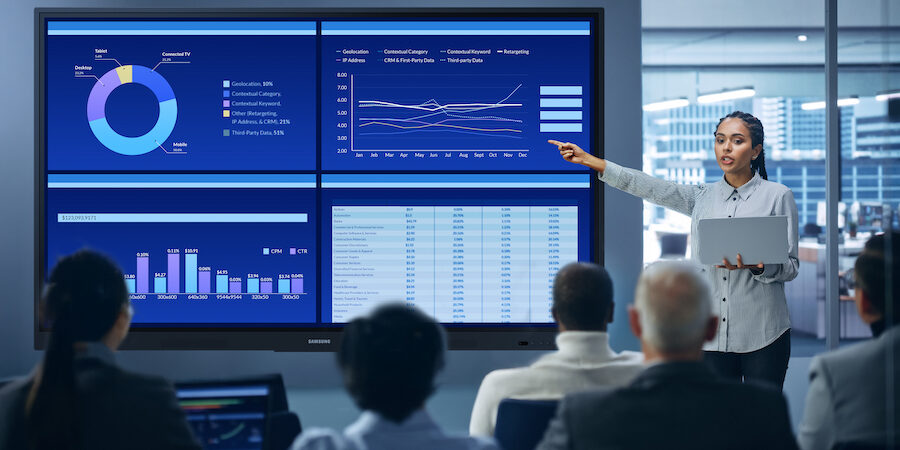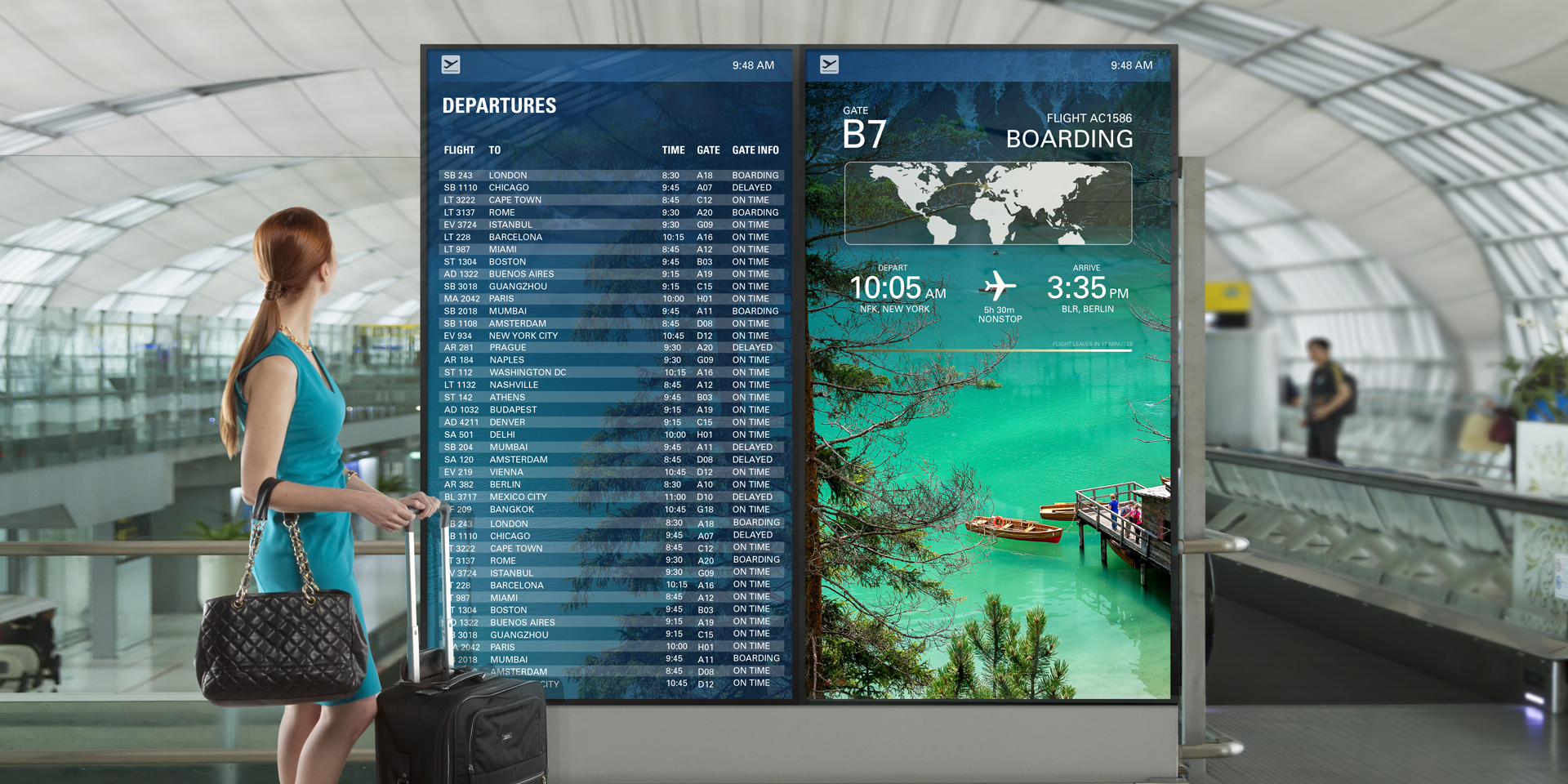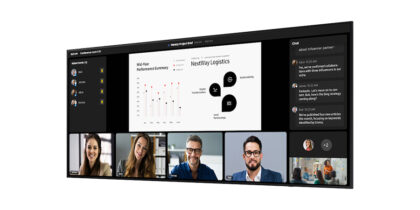Whether it’s an impromptu meeting before an important presentation, a brainstorming session or a weekly stand-up, meetings are critical to business productivity. And they’re frequent, too, with the average employee spending 14.8 hours per week, about 37% of their time, in meetings, according to a 2024 report. Many meetings are collaboration sessions where participants work together to complete a project, brainstorm ideas and create winning strategies for the year ahead.
Today, 55% of the workforce is hybrid, 26% is exclusively remote, and 19% is on-site, according to Gallup. So, while more in-office meetings are taking place than during the pandemic, most meetings still occur online or in hybrid settings, making remote collaboration tools essential. That’s because encouraging collaboration of any kind — and providing ways to do so — is both powerful and profitable.
In fact, according to Gallup, good collaboration and teamwork lead to more highly engaged employees, resulting in 23% higher profitability and 18% higher productivity.
Collaboration provides many other benefits to businesses, too. It fosters common understanding, sets expectations, increases the sense of belonging, creates transparency, encourages involvement, improves decision making and increases employee satisfaction. That makes fostering and supporting collaboration essential to achieving your business goals. Read on to learn how to collaborate effectively using the right technology.
The do’s
1. Define a plan and end goal for every meeting. Like money, time should not be wasted. Be purposeful with your meetings by setting a clear plan and goals beforehand, whether by memo or email days ahead or a pause at the start of the meeting. This helps set expectations about the scope and purpose of the meeting, keep everyone on task and increase the chances of achieving the desired outcome.
Digital signage content management made easy
Get your complete guide to configuring and tailoring real-time messaging using an integrated CMS. Download Now
2. Make sure everybody is on the same page. Keeping everyone on task and encouraging collaboration is critical to meeting productivity — for both participants in the room and online. One of the best ways to accomplish this is with collaborative technology, such as the new Samsung WAF Interactive Display, which integrates videoconferencing software and allows remote team members and in-person staff in a conference room to meet.
In a hybrid meeting scenario, every participant can view content on a WAF display, whether it’s a meeting agenda, slideshow presentation, website or streamed content. Presenters in a conference room can use the split-screen feature on the display and share content from multiple applications simultaneously. Employees can seamlessly write notes or draw on the displayed content with an always-visible Annotation button.
To further facilitate collaboration, the WAF display allows multiple employees to present on the board simultaneously. That can be accomplished in front of the board or wirelessly from their computing devices. For example, the display’s multi-touch capabilities allow multiple employees to write and present on the board at the same time. In addition, up to nine in-person or remote employees can wirelessly connect their personal computing devices and simultaneously share their screens on the WAF display.
3. Equip your employees with the right technology. With so many online meetings, collaboration technology is more important than ever. In the conference room, using an interactive display — synced with team members’ devices — can be particularly helpful in visualizing concepts, jotting down ideas, building off others’ thoughts and keeping everyone on the same page.
Samsung WAF Interactive Display is a versatile and flexible collaboration tool with AI functionality. Available in 65-, 75- and 86-inch models, it can accommodate any room size. The WAF display runs on the Android OS and a powerful octa-core CPU, but with an OPS slot, organizations can transform the display into a Windows device. In screen-sharing mode, the display supports not only Android devices but also iOS, Mac, Windows and Chrome OS devices. To make collaboration more seamless, the WAF display features front-facing physical controls that provide quick access to frequently used functions, which enhances the meeting experience.
In addition, project management software is another technology that can help organize collaboration input by standardizing elements like document sharing, file storage, time tracking and communication.
4. Practice active listening. It’s easy to get distracted by social media and text notifications during a meeting, but this kind of multitasking often results in missed opportunities. Instead, ask employees to commit to active listening. This requires them to listen intently to what other team members are saying — enough that they can explain it back to them and others. In addition to improving communication, active listening helps team members feel heard and supported.
5. Share resources and tools. All team members need access to the most up-to-date information and resources to collaborate effectively. Electronic document distribution makes this easy, both before and after the meeting. A legal team meeting, for example, can run more efficiently if everyone has reviewed digital documents beforehand.
A design team conducting a brainstorming session can leverage technology like Samsung WAF Interactive Display to compare and edit designs easily. Multiple people can simultaneously cast their personal devices onto the 4K display, take notes on top of the presented material and distribute all annotated files to team members after the meeting with the click of a button.
6. Encourage collaboration outside of meeting times. Creativity doesn’t turn off when the meeting ends. New ideas can arrive at any time, and when they do, it can be helpful to run them by other team members. Asynchronous communication helps teams advance projects without having to communicate in real time. Shared technology is critical to this process.
The don’ts
1. Exclude participants. You never know where a good idea will come from, so encourage all relevant voices — including people working remotely. In addition to fostering new ideas, casting a wider net can uncover valuable opinions while promoting inclusion, leading to greater retention and productivity.
2. Create collaboration overload. While collaboration is important to productivity and team building, more isn’t always better. In fact, the average worker declines, skips or cancels 3.5 meetings a week. Their top three reasons were that they were already booked for another meeting, they had more important tasks to focus on and the meetings weren’t high enough priority to attend.
Furthermore, too many meetings can depress productivity and morale and increase stress and anxiety, taking a toll on collaboration. To make the most of your company’s time, keep meetings for projects requiring collaboration and leave busy work outside the conference room, such as collecting data and setting goals.
3. Use too many tools. Technology is an important enabler of everything businesses do today, but providing too many choices or allowing a Bring Your Own Device policy can backfire. The tools employees choose may use different software and formats, not meet company security standards or not interface easily with corporate resources.
Technology for collaboration
Effective collaboration pays real dividends, including improved productivity, problem-solving, employee satisfaction, innovation and retention rates. By taking a thoughtful approach to tech-enabled collaboration, organizations can benefit from bringing together — and enabling — employees to share ideas and feedback effectively.
Learn more about how collaboration technology like interactive displays can increase versatility. And check out this free guide to learn how to further level up conference room technology.








